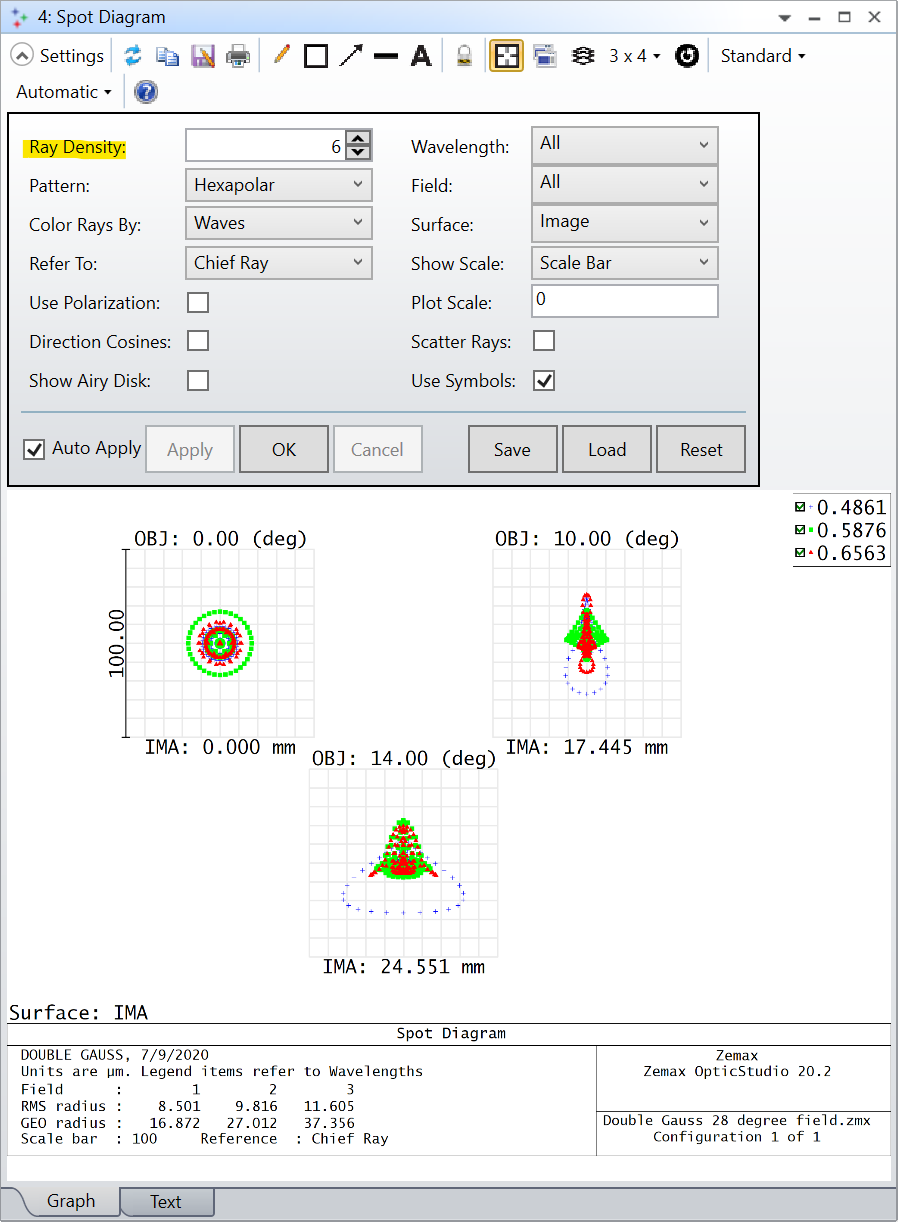How does the Ray Density in a spot diagram correlate to the number of rays used?
Spot Diagram Ray Density
Best answer by Sarah.Grabowski
The correlation between the Ray Density and the number of rays depends on the pattern selected (referring to the appearance of the selected rays as seen in the plane of the pupil). For a Square sampling of rays, the Ray Density refers to the number of rays across the height and across the width of the pattern of selected rays. On the other hand, a Hexapolar pattern has rings with multiples of six expanding out around a central ray: 6, 12, 18, etc. The Ray Density then refers to the number of rings used, thus a sampling density of three will result in 1+6+12+18=37 rays. The Ray Density for a Dithered pattern (a pseudo-random pattern of rays), increases similarly to the Hexapolar pattern (adding a multiple of six with each increased sampling density). Using more rays will improve the accuracy of the spot diagram, though it will naturally increase the computation time.

Enter your E-mail address. We'll send you an e-mail with instructions to reset your password.



